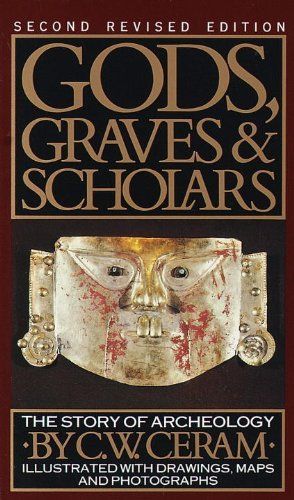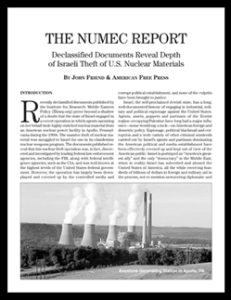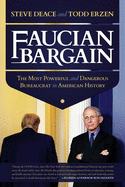Table of Contents
I. THE BOOK OF THE STATUES
Pompeii, Troy, Mycene, Crete
I the Queen of Naples: From her Garden to Pompeii – 3
II Winckelmann: The Birth of a Scientist – 10
III Interlude: Why Search for the Past? – 16
IV Schliemann (I): A Merchant Digs for Trojan Gold – 26
V Schliemann (II): THe Mask of Agamemnon – 41
VI Schliemann (III): Conflict with the Scholars – 49
VII Schliemann (V): Mycenae, Tiryns, Crete – 57
VIII Evans: Crete and the Minotaur – 61
II. THE BOOK OF THE PYRAMIDS
The Empires of Egypt
IX Napoleon: In the Land of the Pharaohs – 75
X Champollion (I): The Mystery of the Rosetta Stone – 88
XI Champollion (II): Treason and Hieroglyphics – 99
XII Belzoni, Lepsius, and Mariette: Life in Ancient Egypt – 117
XIII Petrie: The Tomb of Amenemhet – 136
XIV Robbers in the Valley of the Kings – 152
XV Mummies – 162
XVI Carter: The Tomb of Tutankhamen – 176
XVII Carter: The Cure of the Pharaohs – 190
III THE BOOK OF THE TOWERS
The Kingdoms of Assyria, Babylonia, and Sumeria
XVIII Botta Finds Nineveh – 211
XIX Grotefend: A Schoolmaster Deciphers Cuneiform – 223
XX Rawlinson: Nebuchadnezzar’s Dictionary in Clay – 236
XXI Layard: A Dilettante Outwits a Pasha – 243
XXII George Smith: The Story of the Flood – 265
XXIII Koldewey: The Tower of Babel – 279
XXIV Wolley: The Oldest Culture in the World – 297
IV THE BOOK OF THE TEMPLES
The Empires of the Aztecs, the Mayas, and the Toltecs
XXV Cortes (I): The Treasure of Moctezuma – 323
XXVI Cortes (II): The Beheaded Culture – 335
XXVII John Lloyd Stephens Buys a Jungle City – 348
XXVIII Intermezzo – 366
XXIX The Mystery of the Abandoned Mayan Cities – 370
XXX Edward Herbert Thompson: Chichen-Itza and the Sacred Wall – 387
XXXI Aztecs, Mayas and Toltecs: Whence Did They Come? – 405
V BOOKS THAT CANNOT YET BE WRITTEN
XXXII New Searches in Old Empires – 419
Chronological Tables – 430
Bibliography – 433
Index follows page 442
Selected Quotes:
“This has become the archaeologist’s grandiose task: to make dried-up wellsprings bubble forth again, to make the forgotten known again, the dead alive, and to cause to flow once more that historic stream in which we are all encompassed.”
“Archaeology, I found, comprehended all manner of excitement and achievement. Adventure is coupled with bookish toil. Romantic excursions go hand in hand with scholarly self-discipline and moderation. Explorations among the ruins of the remote past have carried curious men all over the face of the earth… Yet in truth, no science is more adventurous than archaeology, if adventure is thought of as a mixture of spirit and deed.”
C. W. Ceram (January 20, 1915 – April 12, 1972) was the pseudonym of German journalist and author Kurt Wilhelm Marek, known for his popular works about archaeology. He chose to write under a pseudonym to distance himself from his earlier work as a propagandist for the Third Reich.
Ceram was born in Berlin. During World War II, he was a member of the Propagandatruppe. His works from that period include Wir hielten Narvik, 1941, and Rote Spiegel – überall am Feind. Von den Kanonieren des Reichsmarschalls, 1943.
In 1949, Ceram wrote his most famous book, Götter, Gräber und Gelehrte — published in English as Gods, Graves and Scholars: The Story of Archaeology — an account of the historical development of archaeology. Published in 28 languages, Ceram’s book eventually received a printing of over 5 million copies, and is still in print today. His very first article in this vein was about Epigraphy entitled: On the Decipherment of an Unknown Script and was published in the Berliner Illustrierte (1935).
Other books by the author include The Secret of the Hittites (1956),March of Archaeology (1958) and The First American (1971), a book on ancient North American history. Under his actual name he wroteYestermorrow: Notes on Man’s Progress (1961); Hands on the Past: The Pioneer Archaeologists Tell Their Own Story (1966).
Kurt Marek was responsible for the publication of A Woman in Berlin, presented as the non-fiction account of a German woman raped by Red Army troops.
He died at Hamburg in 1972.
The Ceram Prize in archaeology is named after him.
Source: Wikipedia






















